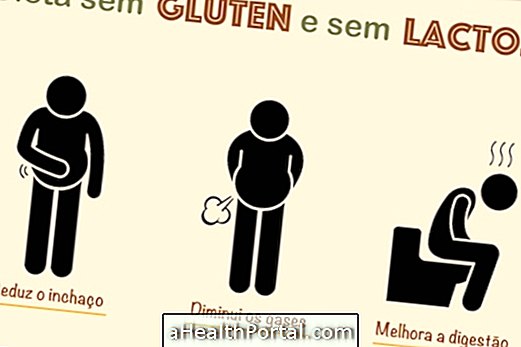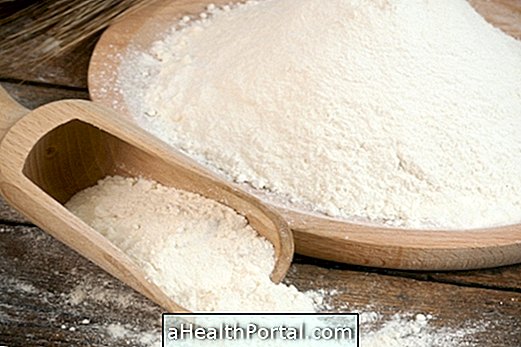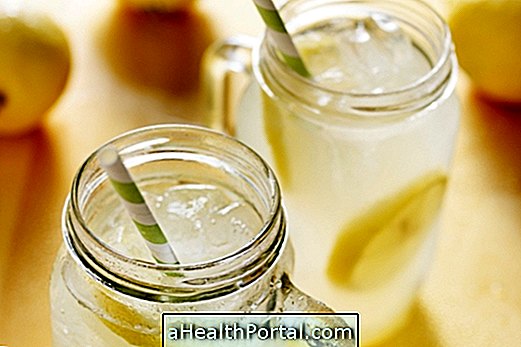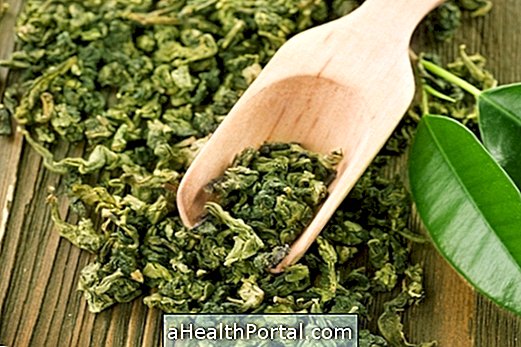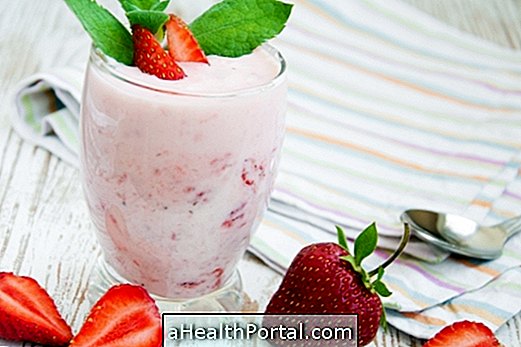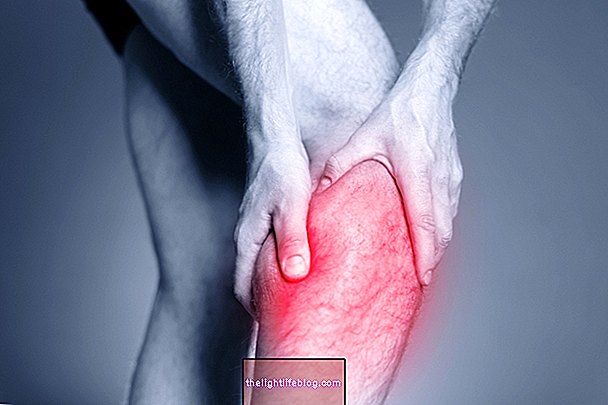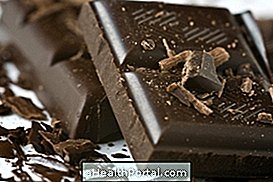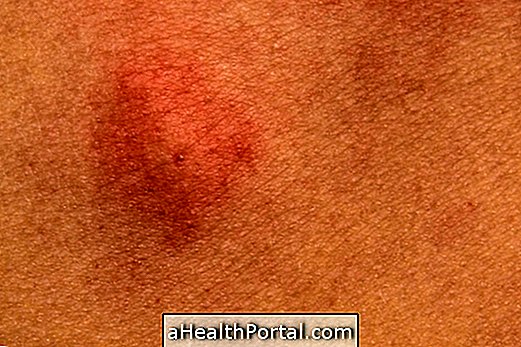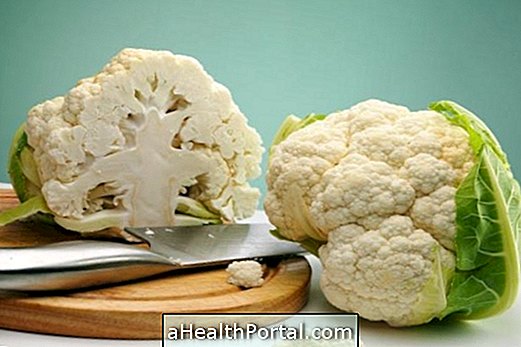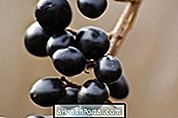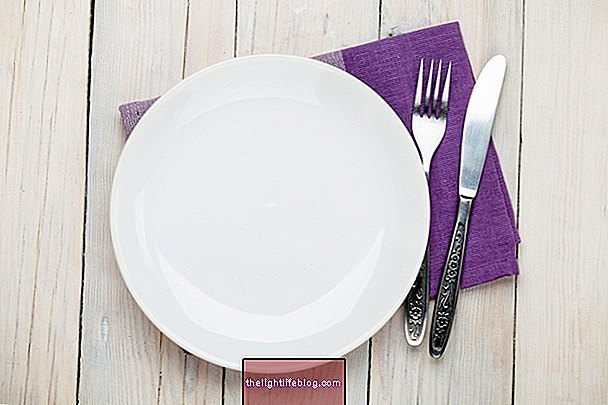The Diet Score chart brings the score for each food, which must be added throughout the day to reach the total points allowed in the diet to lose weight. Doing this count is essential to calculate how much you can eat at each meal because you are not allowed to exceed the total score of the day.
Thus, it is necessary to have the food points table to consult whenever you are going to make a meal or plan the menu of the day by combining the foods so that the points allow for quality meals and that help in weight loss. Here's how to calculate the total points allowed per day.

Group 1 - Food released
This group is made by foods that have practically no calorie, and therefore do not count points in the diet and can be consumed at will throughout the day. Within this group are:
- Vegetables: chard, watercress, celery, lettuce, seaweed, almeirão, caruru, chicory, cabbage, Brussels sprouts, fennel, endive, spinach, beetroot, jiló, gherkin, turnip, cucumber, peppers, radish, cabbage, arugula, celery, taioba and tomato;
- Seasonings: salt, lemon, garlic, vinegar, green scent, pepper, bay leaf, mint, cinnamon, cumin, nutmeg, curry, tarragon, rosemary, ginger and strong root;
- Low calorie beverages: coffee, teas and lemon juice without sugar or sweetened with sweeteners, diet sodas and water;
- Gum and sugarless candy.
The vegetables in this group can be used to increase the volume of meals and bring satiety because they are high in fiber.
Group 2 - Vegetables
Each 2 tablespoons of the vegetables in this group count 10 points in the diet, and they are: pumpkin, zucchini, artichoke, asparagus, aubergine, beetroot, broccoli, bamboo shoots, bean sprouts, onions, chives, carrots, mushroom, cauliflower, fresh pea, heart of palm, okra and pod.
Group 3 - Meat and eggs
Each serving of meat is worth 25 points, being important to be aware of the quantity of each type of meat:
| Food | Portion | Points |
| Egg | 1 UND | 25 |
| Quail egg | 4 UND | 25 |
| Meatballs | 1 average UND | 25 |
| Canned tuna | 1 tablespoon | 25 |
| Ground beef | 2 tablespoons | 25 |
| dried meat | 1 tablespoon | 25 |
| Skinless chicken thigh | 1 UND | 25 |
| Alcatra or Filé Mignon | 100 g | 40 |
| Bovine stock | 100 g | 70 |
| Pork chop | 100 g | 78 |
Group 4 - Milk, cheeses and fats
This group includes milk, cheeses, yogurts, butter, oils and oils, and your score may vary as shown in the table below:
| Food | Portion | Points |
| Whole milk | 200 ml or 1.5 tbsp | 42 |
| Skimmed milk | 200 ml | 21 |
| Whole Yogurt | 200 ml | 42 |
| butter | 1 tablespoon rasa | 15 |
| Oil or olive oil | 1 tablespoon rasa | 15 |
| Milk cream | 1.5 teaspoons | 15 |
| Ricotta | 1 large slice | 25 |
| Minas cheese | 1 medium slice | 25 |
| Muixe cheese | 1 thin slice | 25 |
| Creamy cheese | 2 dessert cabbage | 25 |
| Parmesan | 1 tablespoon flatbread | 25 |
Group 5 - Cereals
This group includes foods such as rice, pasta, beans, oats, bread and tapioca.
| Food | Portion | Points |
| Cooked rice | 2 tablespoons | 20 |
| Rolled oats | 1 tablespoon | 20 |
| English potato | 1 average UND | 20 |
| Sweet potato | 1 average UND | 20 |
| Cracker cracker | 3 UND | 20 |
| couscous | 1 medium slice | 20 |
| Wheat flour | 2 tablespoons | 20 |
| Crumbs | 1 tablespoon | 20 |
| Beans, peas and lentils | 4 tablespoons | 20 |
| Cooked pasta | 1 cup of tea | 20 |
| Loaf bread | 1 slice | 20 |
| French bread | 1 UND | 40 |
| Tapioca | 2 tablespoons shallow | 20 |
Group 6 - Fruits
The following table shows the number of points for each portion of fruit:
| Food | Portion | Score |
| Pineapple | 1 small round | 11 |
| Prune | 2 UND | 11 |
| Silver banana | 1 average UND | 11 |
| Guava | 1 small UND | 11 |
| Orange | 1 small UND | 11 |
| Kiwi | 1 small UND | 11 |
| Apple | 1 small UND | 11 |
| Papaya | 1 small slice | 11 |
| Mango | 1 small UND | 11 |
| Tangerine | 1 UND | 11 |
| Grape | 12 UND | 11 |
Advantages and disadvantages

This diet has the advantage of allowing the ingestion of any type of food, including sweets and soda, but provided that the limit of the score is always respected. This also helps you stay firm in the diet longer, since being able to consume calorie and yummy foods brings a sense that not all the pleasure that the food behind will be lost.
However, its disadvantage is that the focus of the diet is only on the total calories, not being a method where one learns to have a balanced diet, favoring the consumption of healthier foods and balancing the nutrients throughout the day.

